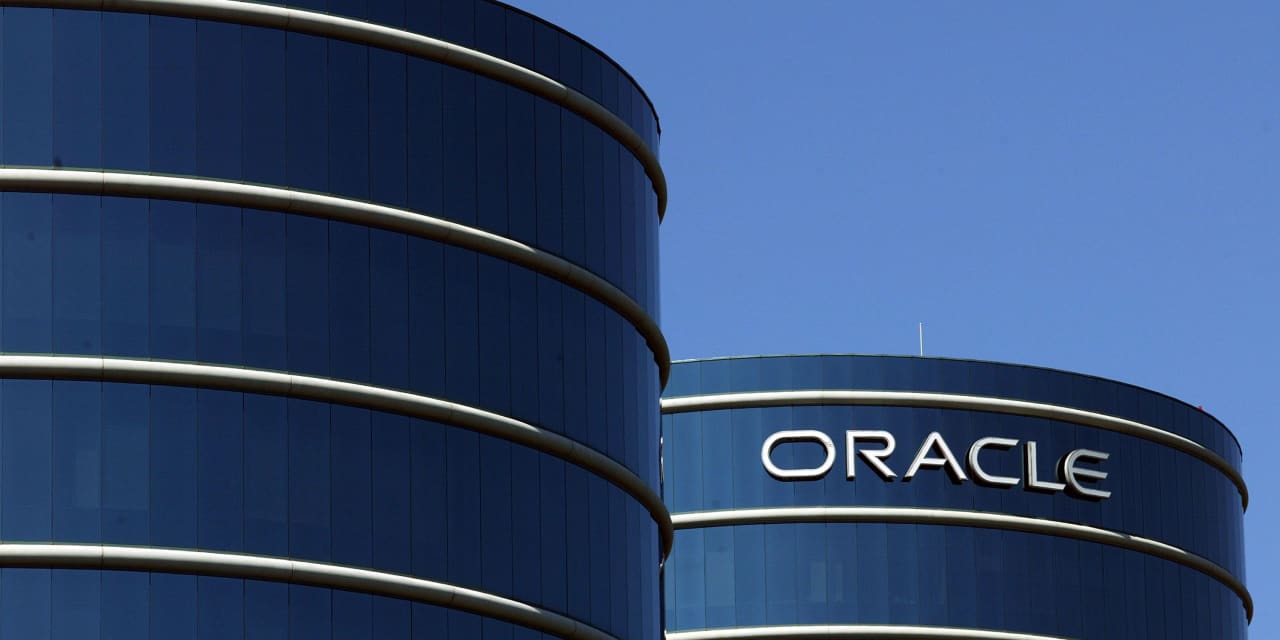Oracle
shares were heading sharply lower in late trading Monday after the enterprise software giant posted November quarter financial results that fell short of both the company’s own guidance and consensus Street estimates.
Slowing sequential growth in the company’s cloud business appeared to be weighing on the shares. Oracle stock was 7.6% lower at $106.39 in late trading.
Heading into the earnings announcement, Oracle shares had rallied 40% this year, in no small measure driven by the continued rapid growth of the company’s cloud computing business. Oracle’s OCI, or Oracle Cloud Infrastructure, has muscled its way into what had been widely perceived as an exclusive three-way battle among Amazon Web Services, Microsoft Azure, and Google Cloud.
On the other hand, Oracle is struggling to fully integrate Cerner, an electronic health records company acquired for $28 billion in 2022. Oracle has been revamping Cerner’s strategy to be focused on cloud delivery. That is causing some disruption in its business and pressuring Oracle’s overall growth rate.
For the fiscal second quarter ended Nov. 30, Oracle reported revenue of $12.9 billion, up 5% as reported, or 4% on constant currency. Street consensus as tracked by FactSet had called for $13.1 billion in revenue, up 6.3%. Oracle’s own guidance had been for 5% to 7% growth, or 3% to 5% adjusted for currency.
Oracle on an adjusted basis earned $1.34 a share in the quarter, a penny above consensus. Under generally accepted accounting principles, it earned 89 cents a share.
The company said overall cloud revenue—which includes both the company’s Oracle Cloud infrastructure arm and cloud-based applications—was $4.8 billion, up 25%, slowing from 29% in the August quarter. Oracle said OCI consumption revenue was up 71% in the quarter. CEO Safra Catz said on the company’s earnings call that cloud revenue could have been higher by hundreds of millions of dollars, were it not for capacity constraints in OCI.
Founder and chief technology officer Larry Ellison noted in the call that the company saw substantial demand for computing capacity in the quarter from Grok, the new AI chatbot built by
Tesla,
X, and SpaceX CEO Elon Musk.
Cloud infrastructure revenue was up 52%, showing faster growth than its larger cloud computing rivals, but slowing from 66% in the August quarter.
Cloud application revenue was $3.2 billion, up 15%.
Oracle said Fusion Cloud ERP, its financial application for larger companies, was up 21% in the quarter, with NetSuite Cloud, targeting smaller business, likewise up 21%.
One area of weakness was the company legacy software licensing business, which was down 18% from a year ago.
Oracle bought back $450 million in common stock in the quarter.
For the February quarter, Catz said on the company’s quarterly earnings call Oracle sees revenue growing between 6% and 8% including Cerner, or 8% to 10% excluding Cerner. Oracle sees non-GAAP profit of between $1.35 and $1.39 a share. The forecast is right in line with Street estimates at $13.3 billion in revenue, up 7%, with profit of $1.37 a share on an adjusted basis.
Catz said revenue for the current fiscal year would be reduced by 1 or 2 percentage points by Cerner, but that it should be a growth story after that.
Catz said in a statement accompanying the earnings press release that demand for its cloud infrastructure and generative AI services is increasing at as astronomical rate. She noted Oracle’s cloud business is now operating at a nearly $20 billion annual revenue run rate.
“Business is good and getting better,” Catz said. She said on the call that the company expects about $8 billion this year on capital spending, with a considerable acceleration in spending in the second half, as Oracle brings more OCI data centers online.
But the strong business didn’t prevent it from reporting a disappointing quarter.
Write to Eric J. Savitz at [email protected]
Read the full article here




